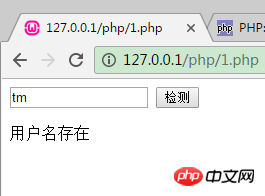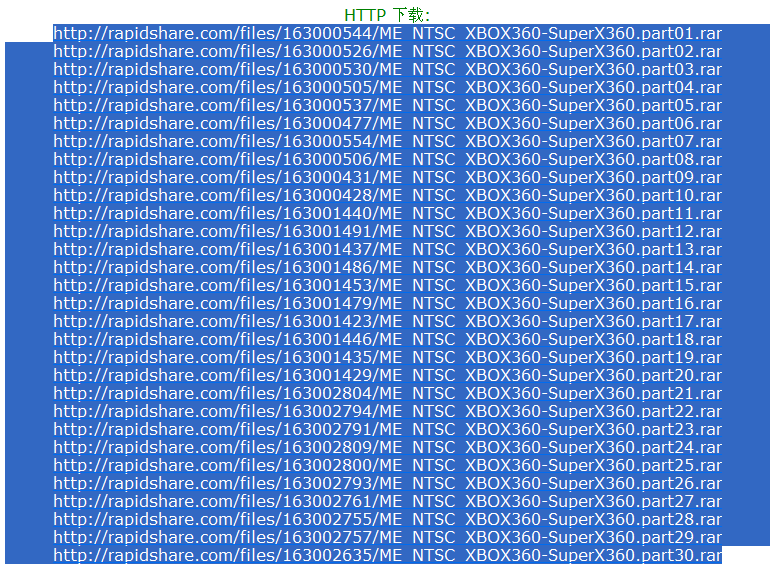Summary of encryption usage of php function crypt()
In php functions, there are many encryption functions, one of which can implement data encryption function is called crypt() function. The crypt() function uses a one-way algorithm and has no corresponding decryption function. It returns a string encrypted using DES, Blowfish, or MD5 algorithms. On the surface, the crypt() function seems to be of little use, but this function is indeed widely used to ensure the integrity of system passwords. Because even if the one-way encrypted password falls into the hands of a third party, it will not be of much use since it cannot be restored to plain text. Below we will make some summary of the use of crypt() function, hoping to be helpful to everyone's PHP learning.
crypt() function related content
1. PHP encryption function—crypt() function encryption usage example

Before introducing the encryption function, let us first introduce the principle of data encryption: it is to process the original plain file or data according to a certain algorithm to make it unreadable A piece of code, usually called "ciphertext", uses this method to achieve the purpose of protecting data from illegal theft and reading! The functions that can encrypt data in PHP mainly include: crypt(), md5() and sha1(), as well as the encryption extension libraries Mcrpyt and Mash. In this article, we first introduce the use of crpyt() function for encryption!
2. Use the crypt() function for encryption-php encryption technology

The crypt() function is one-way Encrypted, the ciphertext cannot be restored to plaintext, and the data after encryption is not the same every time. How to judge?
——This is the problem that the salt parameter is to solve. The crypt() function uses the salt parameter to encrypt the plain text. When judging, the output information is encrypted again using the same salt parameter, and the judgment is made by comparing the results after the two encryptions.
3. The code for using crypt() to implement user authentication in PHP
The crypt() function is defined as follows. string crypt (string input_string [, string salt])
Among them, the input_string parameter is the plaintext string that needs to be encrypted. The second optional salt is a bit string, which can affect the encrypted password and further eliminate the possibility of being cracked. possibility. By default, PHP uses a 2-character DES interference string. If the system uses MD5 (see the next section), PHP will use a 12-character interference string. The length of the interference string that the system will use can be found by executing the following command.
print "My system salt size is: ". CRYPT_SALT_LENGTH;
4. Use crypt() in PHP to implement user authentication
crypt() function returns String encrypted using DES, Blowfish, or MD5. This function behaves differently on different operating systems, and some operating systems support more than one algorithm type. At installation time, PHP checks what algorithms are available and what algorithms are used. Readers who have a little experience using non-Windows platforms may be quite familiar with crypt(). This function completes a function called one-way encryption. It can encrypt some plain codes, but it cannot in turn convert the password into The original plain code.
5. Function introduction of PHP function crypt()
The plain codes corresponding to these encrypted passwords in PHP function crypt() are kent and banner respectively. and parker. Pay attention to the first two letters of each password. This is because I used the following code to create the interference string based on the first two letters of the password. I will use Apache's password-response authentication configuration to prompt the user for their username and Passwords, a little-known fact about PHP is that it can recognize the username and password entered by Apache's password-reply system as $PHP_AUTH_USER and $PHP_AUTH_PW, which will be used in the authentication script.
Related Q&A
1. Questions about laravel5.2 openssl_encrypt()?
3. How to implement the PHP crypt() function in Nodejs
[Related recommendations]
2. php Chinese website free video tutorial: 《php.cn Dugujiu Cheap (4)-php video tutorial》
The above is the detailed content of Summary of encryption usage of php function crypt(). For more information, please follow other related articles on the PHP Chinese website!

Hot AI Tools

Undresser.AI Undress
AI-powered app for creating realistic nude photos

AI Clothes Remover
Online AI tool for removing clothes from photos.

Undress AI Tool
Undress images for free

Clothoff.io
AI clothes remover

Video Face Swap
Swap faces in any video effortlessly with our completely free AI face swap tool!

Hot Article

Hot Tools

Notepad++7.3.1
Easy-to-use and free code editor

SublimeText3 Chinese version
Chinese version, very easy to use

Zend Studio 13.0.1
Powerful PHP integrated development environment

Dreamweaver CS6
Visual web development tools

SublimeText3 Mac version
God-level code editing software (SublimeText3)

Hot Topics
 1386
1386
 52
52
 PHP 8.4 Installation and Upgrade guide for Ubuntu and Debian
Dec 24, 2024 pm 04:42 PM
PHP 8.4 Installation and Upgrade guide for Ubuntu and Debian
Dec 24, 2024 pm 04:42 PM
PHP 8.4 brings several new features, security improvements, and performance improvements with healthy amounts of feature deprecations and removals. This guide explains how to install PHP 8.4 or upgrade to PHP 8.4 on Ubuntu, Debian, or their derivati
 How To Set Up Visual Studio Code (VS Code) for PHP Development
Dec 20, 2024 am 11:31 AM
How To Set Up Visual Studio Code (VS Code) for PHP Development
Dec 20, 2024 am 11:31 AM
Visual Studio Code, also known as VS Code, is a free source code editor — or integrated development environment (IDE) — available for all major operating systems. With a large collection of extensions for many programming languages, VS Code can be c
 7 PHP Functions I Regret I Didn't Know Before
Nov 13, 2024 am 09:42 AM
7 PHP Functions I Regret I Didn't Know Before
Nov 13, 2024 am 09:42 AM
If you are an experienced PHP developer, you might have the feeling that you’ve been there and done that already.You have developed a significant number of applications, debugged millions of lines of code, and tweaked a bunch of scripts to achieve op
 Explain JSON Web Tokens (JWT) and their use case in PHP APIs.
Apr 05, 2025 am 12:04 AM
Explain JSON Web Tokens (JWT) and their use case in PHP APIs.
Apr 05, 2025 am 12:04 AM
JWT is an open standard based on JSON, used to securely transmit information between parties, mainly for identity authentication and information exchange. 1. JWT consists of three parts: Header, Payload and Signature. 2. The working principle of JWT includes three steps: generating JWT, verifying JWT and parsing Payload. 3. When using JWT for authentication in PHP, JWT can be generated and verified, and user role and permission information can be included in advanced usage. 4. Common errors include signature verification failure, token expiration, and payload oversized. Debugging skills include using debugging tools and logging. 5. Performance optimization and best practices include using appropriate signature algorithms, setting validity periods reasonably,
 How do you parse and process HTML/XML in PHP?
Feb 07, 2025 am 11:57 AM
How do you parse and process HTML/XML in PHP?
Feb 07, 2025 am 11:57 AM
This tutorial demonstrates how to efficiently process XML documents using PHP. XML (eXtensible Markup Language) is a versatile text-based markup language designed for both human readability and machine parsing. It's commonly used for data storage an
 PHP Program to Count Vowels in a String
Feb 07, 2025 pm 12:12 PM
PHP Program to Count Vowels in a String
Feb 07, 2025 pm 12:12 PM
A string is a sequence of characters, including letters, numbers, and symbols. This tutorial will learn how to calculate the number of vowels in a given string in PHP using different methods. The vowels in English are a, e, i, o, u, and they can be uppercase or lowercase. What is a vowel? Vowels are alphabetic characters that represent a specific pronunciation. There are five vowels in English, including uppercase and lowercase: a, e, i, o, u Example 1 Input: String = "Tutorialspoint" Output: 6 explain The vowels in the string "Tutorialspoint" are u, o, i, a, o, i. There are 6 yuan in total
 Explain late static binding in PHP (static::).
Apr 03, 2025 am 12:04 AM
Explain late static binding in PHP (static::).
Apr 03, 2025 am 12:04 AM
Static binding (static::) implements late static binding (LSB) in PHP, allowing calling classes to be referenced in static contexts rather than defining classes. 1) The parsing process is performed at runtime, 2) Look up the call class in the inheritance relationship, 3) It may bring performance overhead.
 What are PHP magic methods (__construct, __destruct, __call, __get, __set, etc.) and provide use cases?
Apr 03, 2025 am 12:03 AM
What are PHP magic methods (__construct, __destruct, __call, __get, __set, etc.) and provide use cases?
Apr 03, 2025 am 12:03 AM
What are the magic methods of PHP? PHP's magic methods include: 1.\_\_construct, used to initialize objects; 2.\_\_destruct, used to clean up resources; 3.\_\_call, handle non-existent method calls; 4.\_\_get, implement dynamic attribute access; 5.\_\_set, implement dynamic attribute settings. These methods are automatically called in certain situations, improving code flexibility and efficiency.




